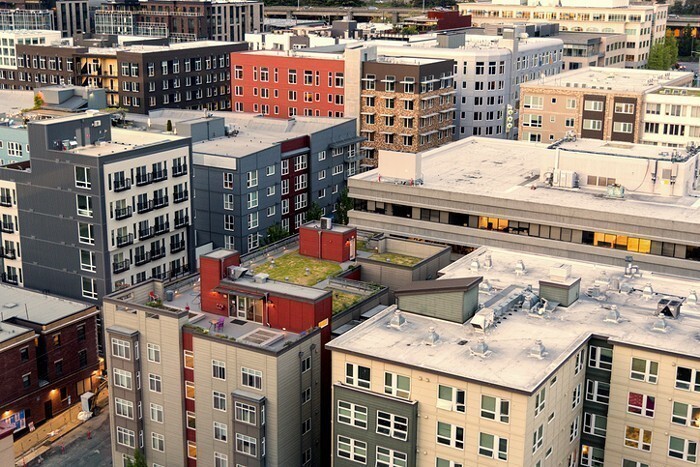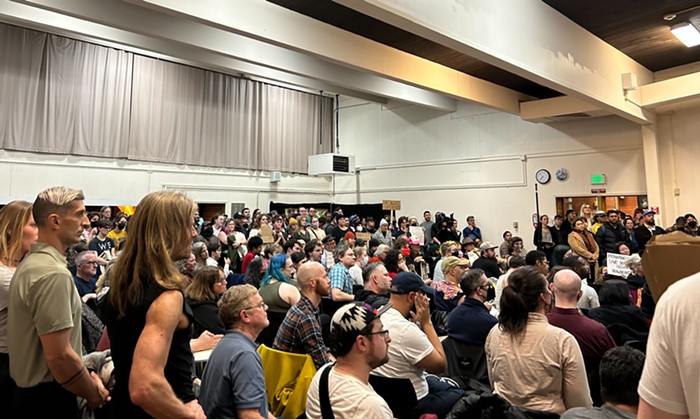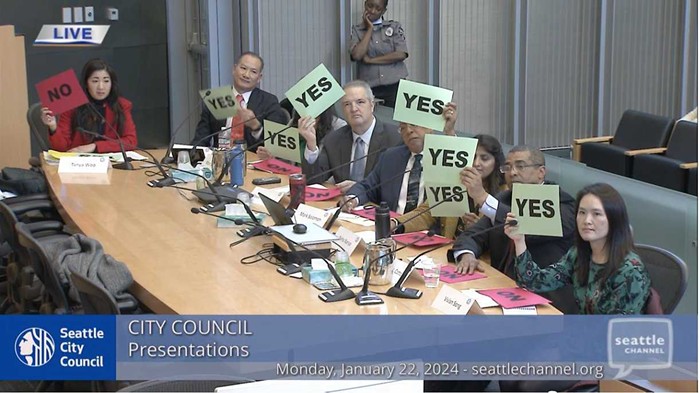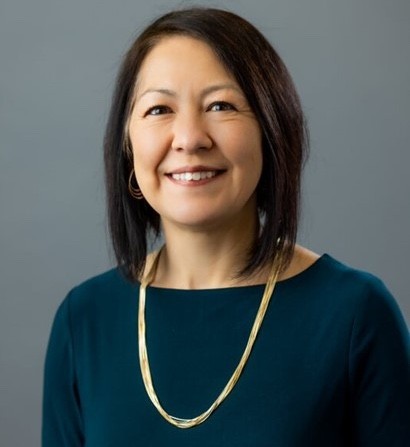
The Sound Transit Board today unveiled a visionary $50 billion light rail package Puget Sound voters will be asked to approve this fall. The package, while imperfect, would extend light rail in the region to 108 total miles, comparable (at least in length) to San Francisco's BART. Getting there will take decades.
The Sound Transit 3 (ST3) plan "delivers on the promise of a truly regional mass transit system for generations to come," King County Executive and Sound Transit Board Chair Dow Constantine said today. "It is an ambitious plan for an ambitious region."
The Sound Transit Board reviewed the plan at its meeting today, but detailed documents about the projects included in the plan won't be online until next week. Here is the map and here is the project list they handed out today.
Here's the overview:
• The ST3 draft is a 25-year plan to raise $27 billion in new taxes. Combined with existing taxes and expected federal funding, the package would total $50 billion.
• Sound Transit says this equals about $200 in new taxes per adult per year. The funding comes from several sources: existing taxes currently going toward other Sound Transit projects and new sales taxes, Motor Vehicle Excise Taxes (MVET), and property taxes. Sound Transit also plans to sell bonds for some construction costs and use fares for ongoing operations costs. More specifics on all this here.
• Among the notable projects: New light rail lines in Seattle to Ballard and West Seattle as well as extensions north to Everett, east to downtown Redmond and Issaquah, and south to Tacoma.
• The projects Seattle is most excited about—Ballard and West Seattle, via two lines crisscrossing through a new downtown tunnel*—won't come online for a very long time. West Seattle would be scheduled to open in 2033 and Ballard would come online in 2038. Suburban projects would begin coming online in 2028, starting with extensions from the Redmond Technology Center to downtown Redmond and from Kent to Federal Way. Others, including an extension to Tacoma Community College and Issaquah wouldn't come online until 2041.
According to Sound Transit, this is due to limitations on how much money the agency can borrow at once, not due to construction issues. Several board members said they want to speed up these timelines, though it's unclear exactly how. "The timelines give me pause," Seattle Mayor Ed Murray, also a member of the Sound Transit board, said today. "But it's important we've made those commitments."
(Seattle Transit Blog has helpfully organized their explanation of ST3 chronologically based on when projects will open, if you want to see all of this another way.)
• Two important lines—one between Ballard and the University District and another between the West Seattle Junction and Burien—are included in the plan only as studies. They would not be built with ST3 funding.
• Sound Transit will finally build a long-awaited station in Seattle at Graham Street on the existing light rail line through South Seattle—but not until 2036. Another station considered for 130th Street in North Seattle only made it in the draft plan as a "provisional" project, meaning it won't be built unless there's leftover money after other projects are built.
When I asked Constantine about what the package does to address social justice—what does it offer diverse and low-income communities?—he pointed to the Graham Street station. He also argued that running light rail to the suburbs, particularly to community colleges, will help serve people currently being pushed out of Seattle.
• Smaller projects like bus improvements, parking lots, and bike and pedestrian infrastructure would begin opening between 2019 and 2024. Several new suburban parking lots are identified in the plan, but a spokesperson for Sound Transit said he didn't know how much money total was being dedicated to parking lots. We'll know more on Tuesday.
On the issue of parking, Seattle Mayor Ed Murray seemed to indicate support for charging for parking, as the Sierra Club has called for, so Sound Transit's parking lots pay for themselves. That's currently not the case for most of the lots in the plan, according to Sound Transit.
• Kirkland will get no light rail in this plan. That comes after Kirkland city officials supported bus service over rail, despite some transit advocates' belief that Kirkland should be connected to the larger rail system.
• Kirkland would be served by Bus Rapid Transit instead (as well as an environmental study for eventual rail). This plan would fund BRT along I-405 between Burien and Lynwood with stops in Kirkland as well as on SR 522 between 145th Street in Shoreline and Woodinville.
The board will take public comment over the next few months and plans to vote on a draft plan in June. Send feedback to emailtheboard@soundtransit.org.
*Just to nip this in the bud: It may seem clever to say, "Sure, another tunnel downtown! What could go wrong!" But that's some lazy bullshit. The state-run SR 99 tunnel project underneath downtown (Bertha) is an unmitigated disaster. But that has nothing to do with Sound Transit's plan to build a new bus and rail tunnel as part of ST3. This tunnel would be smaller and Sound Transit has a track record of successfully digging tunnels. More importantly: The alternative to a tunnel for these light rail routes would be to run rail at-grade (alongside traffic) through downtown. That would be a mistake. At-grade routes sink reliability and speed and therefore ridership. Don't conflate WSDOT's massive underground fuckup with this proposed Sound Transit project.
This post has been updated.


















